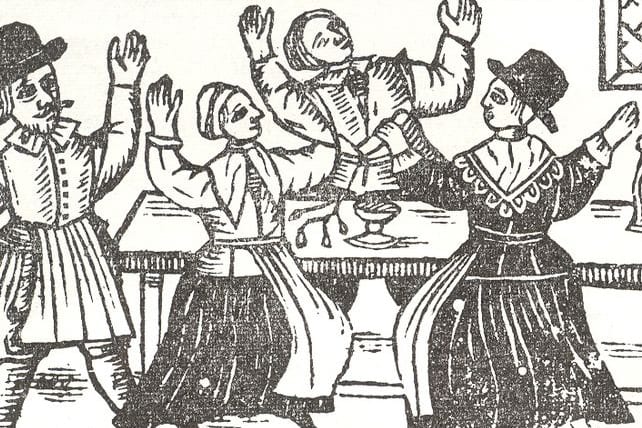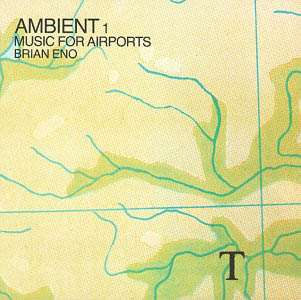Thanksgiving and The Gnosticism of Airplane Drinking
Reading Time: 7 minutes.
Alienation with thankfulness, music with cocktails.
Essay

Consider the gnosis of planes and drinking on them.
For many, Thanksgiving brings travel; travel involves planes; and planes open a curious aspect of alcohol. American novelist Walker Percy famously memorialized “the peculiar gnosis of trains.” We should consider this Thanksgiving the gnosis of planes and drinking on them.
Of trains and alienation, Percy points out:
Whereas one commuter may sit on the train and feel himself quite at home, seeing the passing scene as a series of meaningful projects full of signs which he reads without difficulty, another commuter, although he has no empirical reason for being so, although he has satisfied the same empirical needs as commuter A, is alienated. To say the least, he is bored; to say the most, he is in pure anxiety; he is horrified at his surroundings-he might as well be passing through a lunar landscape and the signs he sees are absurd or at least ambiguous. (It will not be necessary at this point to consider the further possibility that commuter A’s tranquillity is no guarantee against alienation, that in fact he may be more desperately lost to himself than B in the sense of being anonymous, the “one” of “one says.”)
Walker Percy, “The Man On The Train”
(Read “The Man On The Train” here). How often have we been Commuter B, even at—or especially at—a holiday, perhaps with the nagging feeling that you can’t go home again. (I realize Thomas Wolfe can be florid and adolescent, but so can Thanksgiving).

There is a peculiar transfer portal of reflection available in the sky with a drink. Why is this so? Obviously, there is both physical separation (from the ground) and physical restraint (to one’s seat or immediate area). Phone calls are prohibited. Unless you pay for Wi-Fi or avail yourself of the limited free connectivity, no one can reach out to you over any platform nor you to them. Because many people watch movies on their phones or other devices, random, struck-up conversations are—blissfully—less frequent than in earlier years. And, perhaps most critically, we have no control. Literally and emotionally, someone else is flying our plane.
Ambient Music must be able to accomodate many levels of listening attention without enforcing one in particular; it must be as ignorable as it is interesting.
Brian Eno
Under such circumstances, is one always better position to observe, like commuter, B, what Percy refers to as the “absurd or ambiguous”? The anesthetic quality of drink can dull observation but it can also cause sensibility to flower. This is perhaps a concept that the grandfather of ambient music, Brien Eno, may have had in mind when he composed his seminal Music for Airports:
“An ambience is defined as an atmosphere, or a surrounding influence: a tint. My intention is to produce original pieces ostensibly (but not exclusively) for particular times and situations with a view to building up a small but versatile catalogue of environmental music suited to a wide variety of moods and atmospheres.
“Whereas the extant canned music companies proceed from the basis of regularizing environments by blanketing their acoustic and atmospheric idiosyncracies, Ambient Music is intended to enhance these. Whereas conventional background music is produced by stripping away all sense of doubt and uncertainty (and thus all genuine interest) from the music, Ambient Music retains these qualities. And whereas their intention is to `brighten’ the environment by adding stimulus to it (thus supposedly alleviating the tedium of routine tasks and levelling out the natural ups and downs of the body rhythms) Ambient Music is intended to induce calm and a space to think.
Ambient Music must be able to accomodate many levels of listening attention without enforcing one in particular; it must be as ignorable as it is interesting.”
music must be able to accommodate many levels of listening attention without enforcing one in particular; it must be as ignorable as it is interesting.”
Brian Eno, liner notes to Music for Airports: Ambient I (September 1978)

The Oxford English Dictionary reminds us that “gnosis” means “a special knowledge of spiritual mysteries.” “Gnosis” was the stock in trade of the Gnostics, an heretical sect of early Christians who maintained, among other things, that there was superior spiritual knowledge available only them and that Scripture was to be interpreted by this mystical hermeneutic.

In contemporary successful professional life we usually find ourselves in one of two situations—the matter at hand is something that cannot be ignored but is not interesting, or the matter at hand is interesting but must of necessity be ignored.
When we are in a situation “as ignorable as it is interesting,” to use Brian Eno’s memorable description, we are freed up to think, to remember, or to wonder. Why? Because in contemporary successful professional life we usually find ourselves in one of two situations—the matter at hand is something that cannot be ignored but is not interesting, or the matter at hand is interesting but must of necessity be ignored. The gnosis of airplanes, especially with drink in hand, allows us to move away from that set of binary iron fetters.

Cocktails

Like music selections, cocktail selections for Thanksgiving are not obvious. Although the celebration has a religious foundation, faith is not interwoven with either art or celebration the way it is with Easter or Christmas. One WCW Thanksgiving favorite is The Toronto, which we discussed last month.
Faithful readers will recall our earlier cocktail discussions. The following cocktails are several that stand out for Thanksgiving drinking. The specs come from Death & Company, Modern Classic Cocktails; Robert Simonson, The Martini Cocktail; and Day, Fauchald, and Caplan, The Cocktail Codex.

The Conference (modified from Death & Co) (Brian Miller)
.5 oz Rittenhouse 100 rye .5 oz Elijah Craig bourbon .5 oz calvados (or Laird’s apple brandy) .5 oz cognac (Hine or Courvoisier) 1 tsp demerara syrup 2 dashes Angostura bitters 1 dash Bittermens Xocolatl mole bitters and garnish 1 lemon twist and 1 orange twist
Stir all the ingredients over ice, then strain into a double rocks glass over one large ice cube. Garnish with the lemon and orange twists.

Oaxaca Old-Fashioned (modified from Death & Co) (Phil Ward)
1.5 oz El Tesoro [or any good quality] resposado tequila .5 oz Del Maguey San Luis del Rio [or any good quality] mezcal 1 tsp agave nectar 2 dashes Angostura bitters and garnish 1 orange twist
Stir all the ingredients over ice, then strain into a double rocks glass over one large ice cube. To garnish, flame the orange twist over the drink, then drop it in.

North Garden
Jason Littrell wrote in 2009: “A guest [at Death & Co.] once asked me to make a cocktail that sounded like ‘the great American novel.’ So I combined apple brandy from our country’s oldest distillery with a classic bourbon.”
1.5 oz Laird’s Bonded Apple Brandy .75 oz Elijah Craig bourbon .25 oz Laphroig 1 tsp demerara syrup 1 dash Angostura bitters
Stir all the ingredients over ice, then strain into a double rocks glass over 1 large ice cube. No garnish.
Note: to make demerara syrup, put I cup demerara sugar in a saucepan with 1 cup of water. Bring to a rapid boil, then reduce het for ten minutes. Allow to cool and store in the refrigerator in a Mason jar. You can find demerara sugar at fancy grocery stores.

The Golden Bough
The “Golden Bough” is an updated riff on the classic Vieux Carre, itself a Manhattan variation created in the 1930s by Walter Bergeron, who according to The Oxford Companion to Spirits and Cocktails (DeGroff and Rothbaum, eds.) was at the time the head bartender at the Monteleone Hotel in New Orleans.
Music

Unlike Easter or Christmas, music for a Thanksgiving celebration is not obvious. Like others’ efforts, the White Collar Wire Playlist on Spotify is dominated by jazz and the 1970s, plus a little classical music:
If you have read this far, you may benefit from some Ambient 1: Music For Airports.

Happy Thanksgiving.